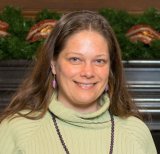2023 Decon Conference Special Sessions
The 2023 EPA International Decontamination Research and Development Conference will be held December 5-7, 2023 in Charleston, South Carolina.
Poster Session | Technology Café | Student Networking Session | Conference Agenda
Poster Session
Poster presentations summarize current research. This session will provide an opportunity for researchers to concisely share their work and answer questions from participants. This session will run concurrently with the Technology Café session.
Be sure to check out current student and recent graduate posters taking part of the Student Poster Competition, noted with an asterisk by the poster number.
Poster Session will take place Wednesday, December 6th from 9:30 am - 11:30 am in the Magnolia Grand Foyer.
| Poster Number | Poster Title & Presenter |
|---|---|
|
1* |
Method Development Biological Agent Personal Decontamination Effectiveness for Airman Battle Uniform Fabric Material: MS2 Bacteriophage Alisha Helm | Air Force Institute of Technology |
| 2 |
Decontamination of Vegetation to Inactive Bacillus anthracis Surrogate Spores and Assessment of Decontaminant Damage to Plants (pdf)
Joseph Wood | U.S. Environmental Protection Agency |
| 3 | Study of Historical BOMARC Non-Critical Weapon Accident Debris Gaiven Varshney | Air Force Institute of Technology |
| 4 |
Evaluation of Clear Topcoats to Alter Chemical Resistivity of Polyurethane Coated Military Assets (pdf)
Janlyn Hope Eikenberg | U.S. Army |
| 5 | Adsorption of Perfluoroalkyl Substances with Activated Carbon: Characterizing Non-Hazardous Simulants Jennifer Hensley | Air Force Institute of Technology |
| 6 |
Cleaning of Personal Protective Equipment and Laundry Contaminated by Viruses (pdf)
Anne Mikelonis | U.S. Environmental Protection Agency |
| 7* | Maximizing SARS-CoV-2 RNA Output from Wastewater Samples: An Evaluation of Extraction Principles for Increased Viral RNA Recovery Nita Khanal | University of North Carolina at Charlotte |
| 8 |
Decontamination of Plumbing Pipes Contaminated with Per- and Polyfluoroalkyl Substances (PFAS) from Aqueous Film Forming Foams (AFFF) (pdf)
Jeffery Szabo | U.S. Environmental Protection Agency |
| 9* | Production of Acids and Bases for CO2 Sequestration Using Bismuth/Nickel Hexacyanoferrate Desalination Battery Princess Merenini | University of Wisconsin at Madison |
| 10 |
Using Community Case Studies to Test the Equitable Resilience Builder (pdf)
Brittany Kiessling | U.S. Environmental Protection Agency |
| 11 | Mpox Virus DNA Contamination Can Still be Detected by qPCR Analysis After Autoclaving Sean Collins | UK Health Security Agency |
| 12 | Wind Flow Characterizations Within Uniform and Non-Uniform Building Configurations Using Wind Tunnel Data and Large Eddy Simulations Michael Pirhalla | U.S. Environmental Protection Agency |
| 13 | Research to Inform Decontamination Strategies for Fentanyl-Contaminated Sites Lukas Oudejans | U.S. Environmental Protection Agency |
| 14 | Biological Decon: Point-of-Use System for Non-Liquid Treatment of Solid Material Jon Calomiris | Sotiria Science |
| 15 | Impacts of a Surface Washing Agent and Chemical Herder on the Aerobic Biodegradation of Crude Oil Kiara Lech | U.S. Environmental Protection Agency |
| 16 | Validation of Large-Space Decontamination via Fogging: Improved Sampling Methods for Virucidal Efficacy Testing Jessica Mason | U.S. Department of Homeland Security |
| 17 |
Biological Incident Response: Building Knowledge through Operational Testing and Exercises (pdf)
Katrina McConkey | U.S. Environmental Protection Agency |
| 18 | Empowering Citizen Resilience: ChatGPT-Enhanced Platform for Unified Incident Reporting and Health Security Ahmad Patooghy (presenting on behalf of Tia Pope) | North Carolina A&T University |
| 19* |
Evacuation Order Effectiveness and Community Behavior: Enabling Strategic Data-Driven Decision Making through Big Data (pdf)
Harsh Anand | University of Virginia |
| 20 |
PHILIS Analytical Methods for the Analysis of Chemical Warfare (CWAS) and Future Generation Agents (FGAS) in Environmental Samples (pdf)
Thomas Fowler | CSS, Inc. |
| 21* | Assessing Waste and Recycling Practices: A Comprehensive Audit at Xavier University Savannah Mays | U.S. Environmental Protection Agency |
| 22 | Remove Per- and Polyfluoroalkyl Substances from Water Using Ion Exchange Coupled with UV/Sulfite Reduction Bingchuan Liu | University of North Carolina at Charlotte |
| 23 | Balancing Efficacy with Environmental Responsibility: Independent Testing of Nano-Enhanced Disinfectants Thomas Cellucci | JPI International |
| 24 |
Developing Auditable Sample Tracking and Recording for Use During CBR Recovery (pdf)
Ian Shortman | UK Defence Science and Technology Laboratory |
| 25 |
Characterizing Bacillus globigii as a Bacillus anthracis Surrogate for Wastewater Treatment Studies and Bioaerosol Emissions |
| 26 | Multi-Component Decontaminants for Neutralization of Toxic Materials in Challenging Conditions Mark Tucker | Artemis AG-Solutions, LLC |
| 27 | Importance of Proper Methodology for Evaluating the Efficacy of Chemical-Based Antimicrobial Air Treatment Products Against Microbial Pathogens Gediminas Mainelis | Rutgers University |
| 28 |
Centering Equity in Community Resilience (pdf)
Ian Reilly | U.S. Environmental Protection Agency |
| 29 | Facilitating Early Adoption: Assessing the Sustainability of Alternatives to Petroleum-Based Ion Exchange Resins Lewis Rowles | Georgia Southern University |
| 30 | A Case Study on Emergency Response Planning Using SWMM: Evaluating the Transport of Biological Agents under Different Rainfall Scenarios and Urban Surfaces Lifeng Yuan | U.S. Environmental Protection Agency |
| 31 | Rapid Inactivation of SARS-CoV-2 Using Vaporised Hydrogen Peroxide Thomas Pottage | UK Health Security Agency |
| 32 | A New High Hazard Chemical Decontamination Line Anne A. Busher | CSS, Inc. |
| 33 | Evaluation of a Chemical Reductant Commercialized as MuniRem® for Neutralization and Destruction of CWAs in CWM Stockpiles Valentine A. Nzengung | MuniRem Environmental LLC |
| 34 | Scoping Review on Procedures Used to Evacuate or Decontaminate Patients During a Chemical Incident Who are Either Unable to Understand Instruction or Unable to Perform Activities Without Assistance Theodore Ruff | Centers for Disease Control and Prevention Joe Padayhag | Centers for Disease Control and Prevention |
| 35 | FRET Based Biosensors for CBRN Threat Detection Steven Demers | Savannah River National Laboratory |
| 36 | Rapid Energetic Medical Instrument Sterilization (REMIS) Zach Minter | National Strategic Research Institute |
| 37 | Sub-Micron Aerosol Vapor Decontamination Using DryDecon™ Technology Tyson Bernthal | DryDecon™ Defense Jorge Camacho | DryDecon™ Defense John Lau | DryDecon™ Defense |
| 38* |
Biochar: A Sustainable, Multi-Beneficial And Cost-Effective Media to Treat the Stormwater Runoff |
Technology Café
The Technology Café provides an opportunity for presenters to demonstrate and discuss advancements in emerging and innovative technologies. Presenters will highlight accomplishments, case studies, challenges, and future directions in decontamination research and application. This session will run concurrently with the Poster session.
Technology Café Session will take place Wednesday, December 6th from 9:30 am - 11:30 am in the Palmetto and Carolina Room.
| Session Number | Technology Title & Presenter |
|---|---|
| 1 | Internet Tools for Sourcing Chemistry Related Data Antony Williams | U.S. Environmental Protection Agency |
| 2 | The Water Sector's One-Stop Reference Tool for Contaminants of Concern Veronica Aponte-Morales | U.S. Environmental Protection Agency |
| 3 | Equitable Resilience Builder Demo Keely Maxwell | U.S. Environmental Protection Agency |
| 4 | Template Tool for Developing Sampling and Analysis Plans for Contamination Incidents Involving Pathogens Using Survey123 Jamie Falik | U.S. Environmental Protection Agency |
| 5 | Scenario Specific CBRNE Detection Evan Durnal | MRIGlobal |
| 6 | Bio-Chemical Catalysis Solution to Water Decontamination Michael Omary | APD Clean Water Technologies Group Co. |
| 7 | Repurposing a Commercial Flight Simulator for Aerial Surveillance Training Matthew Huyser | U.S. Environmental Protection Agency |
| 8 | Next Generation PPE for Real-Time Inactivation of Airborne Biological Threats Christopher Bowers | XCMR Inc. |
| 9 | Enhancing Laboratory Preparedness: Automated Decon Systems for Biothreat and Emerging Pathogen Response Jeff Woodson | CURIS System |
Student Networking Session
Current students and recent graduates are invited to a discussion panel of researchers and emergency responders. Panelists will informally discuss their experiences in various roles related to decontamination and homeland security.
Student Networking Session will take place Wednesday, December 6th from 12:00 pm - 1:00 pm in the Magnolia Ballroom. **Please note, lunch will not be provided.
Speakers

Romy Campisano is currently a Program Analyst with the Technical Support Coordination Division in EPA's Office of Research and Development. She tracks and records ORD's technical support efforts to EPA's Superfund program as well as other support requests from the Agency, other federal organizations and industry. Ms. Campisano has a B.S. in Chemistry and started her career as a Student Contractor before being hired into the Federal Career Intern Program in the Homeland Security Research Program. She worked for over 12 years developing Selected Analytical Methods for Environmental Remediation and Recovery. She received her MBA during this time and eventually, pivoted in her career and started supporting program operations in areas of research planning, budget and human resources.

Katrina McConkey is a physical scientist with EPA's Chemical, Biological, Radiological, Nuclear (CBRN) Consequence Management Advisory Division. She has 20 years of experience in emergency response support and research. With expertise spanning from CBRN tactical and operational guidance to laboratory testing, field studies, and exercises, Katrina has provided subject matter expertise to several U.S. federal agencies, including the EPA, U.S. Department of Defense, U.S. Department of Homeland Security (DHS), and law enforcement. Katrina has supported EPA/DHS interagency programs and projects such as the Interagency Biological Restoration Demonstration (IBRD), Bio-Response Operational Testing and Evaluation (BOTE), Scientific Program on Reaerosolization & Exposure (SPORE), Underground Transport Restoration (UTR) Operational Technology Demonstration (OTD), and Analysis for Coastal Operational Resiliency (AnCOR). Her research has helped inform and guide policy, contributing to enhancing national preparedness for CBR incident response and remediation.

Keely Maxwell is a General Anthropologist with EPA's Center for Environmental Solutions and Emergency Response. An environmental anthropologist and ecologist by training, Keely first came to EPA as an American Association for the Advancement of Science (AAAS) Science & Technology Policy Fellow. Dr. Maxwell leads several research projects, including community resilience to disasters, community engagement in environmental cleanups, and disaster waste decision-making. She served as a chapter lead for the Built Environment, Urban Systems, and Cities chapter of the Fourth National Climate Assessment. Dr. Maxwell has a Ph.D. and M.F.S. from the Yale School of Forestry and Environmental Studies and a B.A. from Williams College.

Marissa Matsler is a Social Scientist at EPA's new Integrated Climate Sciences Division. She studies infrastructure justice and resilience using an interdisciplinary social-ecological-technological systems (SETS) lens, with a focus on water and disaster waste management systems. Most recently, Dr. Matsler was an ORISE Postdoctoral Fellow at EPA. Before this she worked with ecologists on social-ecological systems research as a Postdoctoral Research Assistant at the Cary Institute of Ecosystem Studies and University of Maryland. She has a Ph.D. in Urban Studies from Portland State University, a Masters of Environmental Management from Yale School of Forestry and Environmental Studies, and a BS in Marine Biology from Oregon State University.

Scott Hudson has worked as a Health Physicist for the federal government since 1995, first with the U.S. Army and later joining EPA in 2005. Scott has experience in applied health physics in the medical, industrial and CBRN arenas. He joined EPA when the National Decontamination Team was formed, and has just recently joined the Office of Research and Development's Homeland Security and Materials Management Division. Scott passed his certification exam in health physics in 2003 and is accredited by the American Academy of Health Physics. His work has focused on radiation safety, decontamination, and training.
